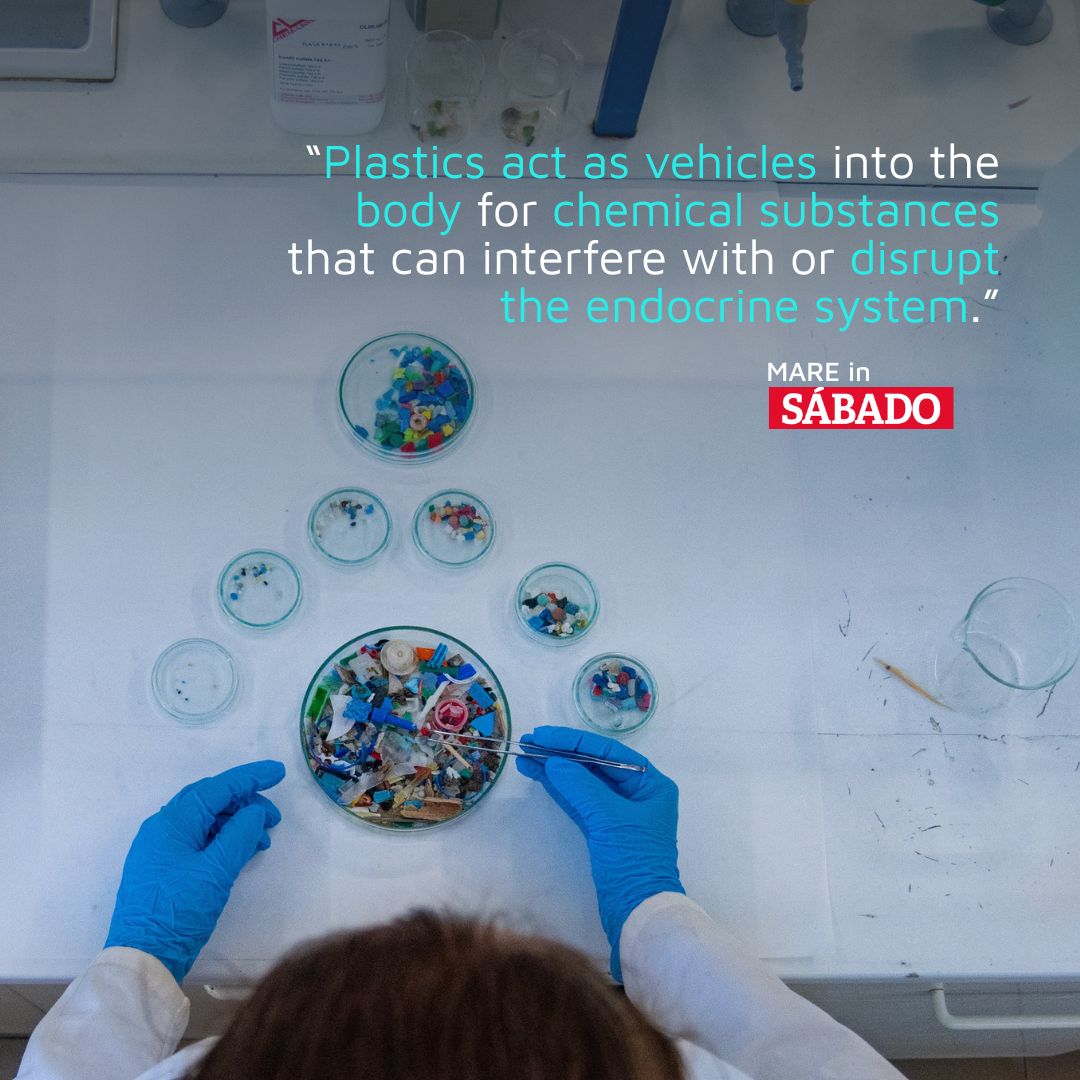Nanoplastics: the invisible danger that lives with us - and how we can take action
We live surrounded by objects that make our daily lives easier, but which hide invisible health risks. In an interview with Sábado magazine, MARE researchers Rita Maurício and Joana Antunes explain how we can protect ourselves. 
These silent threats include nanoplastics, plastic particles so small that they can be up to 70 times thinner than a strand of hair. Their small size allows them to cross natural barriers in the body such as the intestinal or blood-brain barrier that protects the brain. This means that they can reach vital organs without being stopped.
According to Rita Maurício, these particles can carry chemical substances that alter the proper functioning of our bodies. Among these substances are bisphenol, phthalates and PFAS, compounds that remain in the environment for a long time and are associated with hormonal effects and the development of diseases such as cancer.
Contact with these substances can happen in various ways. y ingesting water and food that has been passed through plastics, by using cosmetics that contain plastic particles or through the skin and inhaling particles present in the air. Products such as reused plastic bottles, takeaway packaging, synthetic clothing or scrubs with microbeads are among the most common examples of sources of exposure.
Although it is difficult to establish a direct link between these substances and certain diseases, there is a growing consensus in the scientific community about their long-term effects. Continuous exposure, even at very low doses, can cause hormonal imbalances and is associated with problems such as infertility, early puberty, polycystic ovary syndrome, neurological changes, cardiovascular and metabolic diseases such as type 2 diabetes.
There are also groups that are more vulnerable to these compounds, such as babies, children, pregnant women, the chronically ill and professionals who come into frequent contact with chemical products, such as hairdressers and cleaners. As we get older, the effects become more worrying, as the compounds accumulate in the body and the body loses its ability to eliminate them.
Even so, there is much we can do to reduce the risk. Avoiding heating food in plastic containers is one such simple measure, as is preferring glass or ceramic. It's also safer to opt for tap water rather than bottled water and to avoid ultra-processed foods packaged in single-use plastic. Choosing cosmetics with more natural formulas, ventilating the house well and washing synthetic clothes with filters or bags that retain microfibers are other important gestures.
Today there are safer alternatives such as biodegradable packaging made from starch or algae, clothes made from natural fibers and utensils made from glass or bioplastic. Small choices with a big impact. As researcher Joana Antunes reminds us, protecting ourselves can start with something as simple as changing the container we heat our lunch in.
To read the interview click HERE
Written by Patrícia Carvalho
